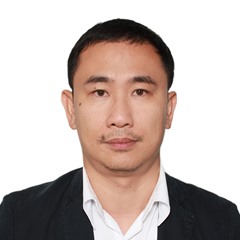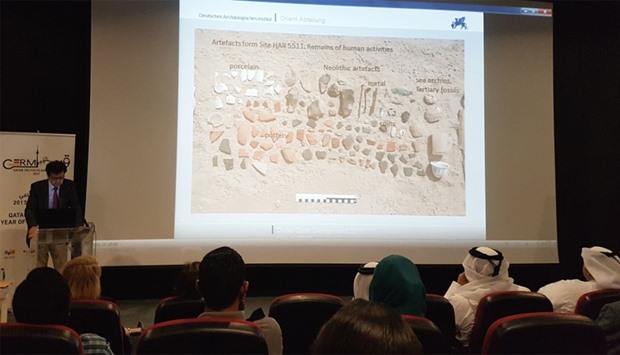Archaeologists involved in the South Qatar Survey Project (SQSP) have gathered “a wealth of evidence” on the country’s pre-modern settlements.
The project focused on investigating the southern part of Qatar, documenting prehistoric, historic and natural heritage sites through surveys and excavations, according to Qatar Museums (QM) acting chief archaeology officer Ali al-Kubaisi.
“It aims to gather reliable evidence for reconstructing the historical past of Qatar, its landscapes, and the sea around it, and to understand how the country’s inhabitants communicated - throughout the millennia - with the outside world, exchanged goods and ideas and formed their civilisations,” al-Kubaisi said at a presentation held at the Doha Fire Station Auditorium yesterday. It was organised by QM and the German Archaeological Institute (DAI).
The event, which forms part of the 2017 Qatar-Germany Year of Culture, also revealed the findings from the five-year collaboration between QM and DAI, looking at Qatar’s and Sudan’s archeological record.
Al-Kubaisi said the project documented archaeological and heritage sites south of the Doha-Dukhan road, aimed at assessing the settlement history and land use in ancient and pre-modern Qatar.
The SQSP also presented its findings associated with wells, surrounding gardens, and early hunting areas in the southern region of the peninsula, according to al-Kubaisi.
“The German archaeologists undertook, as in the case of the coastal settlement of Umm Al Houl, regular excavations, and delivered stunning results,” he said. “This highly interdisciplinary research project brought together scholars from various disciplines.”
In his presentation, DAI’s Orient Department first director, Professor Ricardo Eichmann cited the southern Qatar’s diverse topography.
“Altogether, nine different topographic areas can be distinguished. Each of these areas is a significant cultural landscape with architectural records, representing different human activities and land use,” he said. “Some areas however were almost completely void of artefacts.”
He noted that the work done so far by the archaeologists showed that the southern region was already inhabited along the ancient coastal zones during the Neolithic period from the eighth to the 5th millennium BC.
“In this period, the human community benefited from favoured climatic conditions and higher precipitation rates than today, and richer vegetation, as well as more extensive ground water favours,” Eichmann added.
He said that in subsequent periods, due to changing environmental conditions, the studied area no longer serve as a favoured cultural landscape.
The settlement activities had shifted to northern regions of the peninsula where ground water resources were more sustainable, according to the DAI official.
“In the south, water is a scarce commodity and the only natural source is ground water,” he said. “The risk of flooding after heavy rains exists in every rawdat, thus the temporary settlements and camps are situated mainly either in the slope towards the rawdat or on top of surrounding plateau.”
The second speaker, Alexandra Riedel presented the work of “Qatar Mission for the Pyramids of Sudan (QMPS)” in Meroe, north of Khartoum, which she headed since 2015 as part of the Qatar-Sudan Archaeological Project.
Coins, glass bottles found
Professor Ricardo Eichmann said that at several campsites, artefacts of the modern period have been found such as coins and glass bottles, “which turned out to be of importance from cultural and archaeological perspective.”
“Currencies point to the contact with other Arab countries like Lebanon, Saudi Arabia or Oman. Soft drink bottles of different brands appear in the 1950s and reflect the economic market,” he noted.
The archaeologists started working in 2012 and up to 2016, they spent two seasons each year in the field.
“Interestingly the larger amount of bottles belonged to the 1970s. This could indicate the change in consumer behaviour that may reflect Qatar’s economic boom after the proclamation of independence in 1971,” Eichmann added.
The team had been interested in collecting information about all kinds of life forms in the Arab region.
“We decided, in accordance with QM, to collect all evidence of human activities, including relics of urban civilisation of the 20th century, which comprise among others metal objects, coins, class bottles and cartridges."


